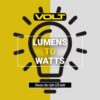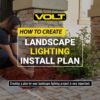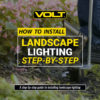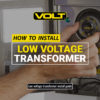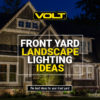Summary: Learn about beam spreads in this instructional video from the landscape lighting experts at VOLT®. We’ll discuss common beam angles and typical use cases for each.
Transcript:
Today, we’ll be going over beam spreads. Beam angle is an indication of the width of a beam of light. In landscape lighting, you can have very narrow, narrow, wide and extra wide beams. These terms don’t describe the distance from one side of the beam to the other. Instead, they describe the angle of the beam from its center point to its edge. Typically, the same beam spread shouldn’t be used for all of the fixtures in your yard. The best beam angle for each fixture is determined by what it’s lighting. Look at the target area or object that you want to light to determine which angle you need.
Here are some common beam angles and some typical use cases for each:
- 12 to 17 degree beams (or narrow beams) produce extremely narrow cones of light ideal for flagpoles, tall palm trees, columns or other tall, narrow objects. Be mindful that when the light from a fixture is concentrated into such a small area, the light in that area becomes stronger, so you may need to select a less powerful lamp if you use this beam.
- 24 degree beams for spotlights project a fairly narrow cone of light. These are best used on tall, narrow objects such as columns and trees. Avoid projecting on wide surfaces, as the narrow beam of light and make it seem artificial.
- 35 to 38 degree beams (or flood lights) are ideal angles to use when lighting between the windows on the front of a house or with smaller trees. These are also good beam angles for lighting objects from a distance.
- 60-degree beams (or wide flood lights) are a good all-purpose beam angle that looks nice on house facades, plant material and any application where you want fairly wide coverage. Use of this angle avoids the projection of a noticeable cone of light on the surface. This gives a more natural appearance to the illumination.
- Finally, 110 degree beams (or very wide flood lights) are used for covering large areas like walls with a wide expanse of light.
Interested in learning more? Head over to our learning center. We have videos and articles covering a wide range of outdoor lighting topics.
